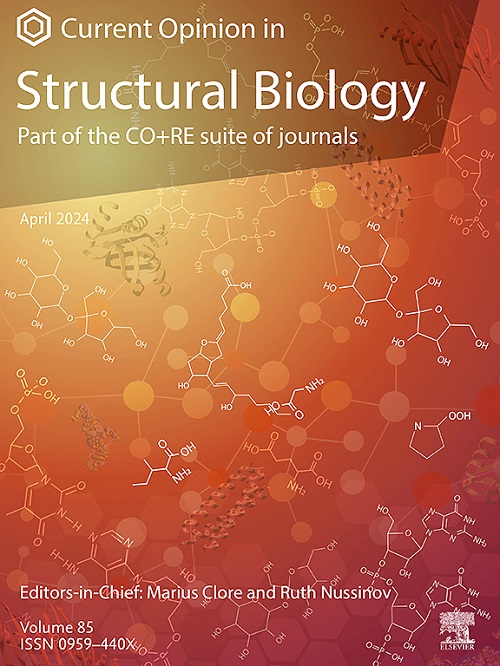Toward understanding whole enzymatic reaction cycles using multi-scale molecular simulations
IF 6.1
2区 生物学
Q1 BIOCHEMISTRY & MOLECULAR BIOLOGY
引用次数: 0
Abstract
Enzymes effectively catalyze chemical reactions at their active sites. The reactions involve three microscopic events at the active sites: substrate binding, multi-step chemical reactions, and product release. These events are often coupled with enzyme conformational changes, making theoretical and computational analyses more challenging. Advanced molecular simulations, involving molecular dynamics (MD) and hybrid quantum mechanics/molecular mechanics (QM/MM), are now utilized to investigate the functions of enzymes such as tryptophan synthase and P-type ATPases. Here, we summarize recent multiscale molecular simulations that incorporate multiple microscopic events in enzyme functions. The coupling of enzyme conformational changes and chemical reactions can predict a proper direction in enzymatic reaction cycles, which requires accurate predictions of the free energy changes between different physiological states. Using machine learning (ML) methods, all the microscopic events in enzyme catalysis could be described with the same accuracy as quantum chemistry. We also discuss recent developments in ML/MM simulations for enzyme catalysis.
利用多尺度分子模拟来理解整个酶促反应循环
酶在其活性位点上有效地催化化学反应。该反应涉及活性位点的三个微观事件:底物结合、多步化学反应和产物释放。这些事件通常伴随着酶的构象变化,使得理论和计算分析更具挑战性。先进的分子模拟,包括分子动力学(MD)和混合量子力学/分子力学(QM/MM),现在被用来研究酶的功能,如色氨酸合成酶和p型atp酶。在这里,我们总结了最近的多尺度分子模拟,包括酶功能中的多个微观事件。酶的构象变化与化学反应的耦合可以预测酶的反应周期的正确方向,这需要准确预测不同生理状态之间的自由能变化。利用机器学习(ML)方法,酶催化中的所有微观事件都可以像量子化学一样精确地描述。我们还讨论了酶催化的ML/MM模拟的最新进展。
本文章由计算机程序翻译,如有差异,请以英文原文为准。
求助全文
约1分钟内获得全文
求助全文
来源期刊

Current opinion in structural biology
生物-生化与分子生物学
CiteScore
12.20
自引率
2.90%
发文量
179
审稿时长
6-12 weeks
期刊介绍:
Current Opinion in Structural Biology (COSB) aims to stimulate scientifically grounded, interdisciplinary, multi-scale debate and exchange of ideas. It contains polished, concise and timely reviews and opinions, with particular emphasis on those articles published in the past two years. In addition to describing recent trends, the authors are encouraged to give their subjective opinion of the topics discussed.
In COSB, we help the reader by providing in a systematic manner:
1. The views of experts on current advances in their field in a clear and readable form.
2. Evaluations of the most interesting papers, annotated by experts, from the great wealth of original publications.
[...]
The subject of Structural Biology is divided into twelve themed sections, each of which is reviewed once a year. Each issue contains two sections, and the amount of space devoted to each section is related to its importance.
-Folding and Binding-
Nucleic acids and their protein complexes-
Macromolecular Machines-
Theory and Simulation-
Sequences and Topology-
New constructs and expression of proteins-
Membranes-
Engineering and Design-
Carbohydrate-protein interactions and glycosylation-
Biophysical and molecular biological methods-
Multi-protein assemblies in signalling-
Catalysis and Regulation
 求助内容:
求助内容: 应助结果提醒方式:
应助结果提醒方式:


